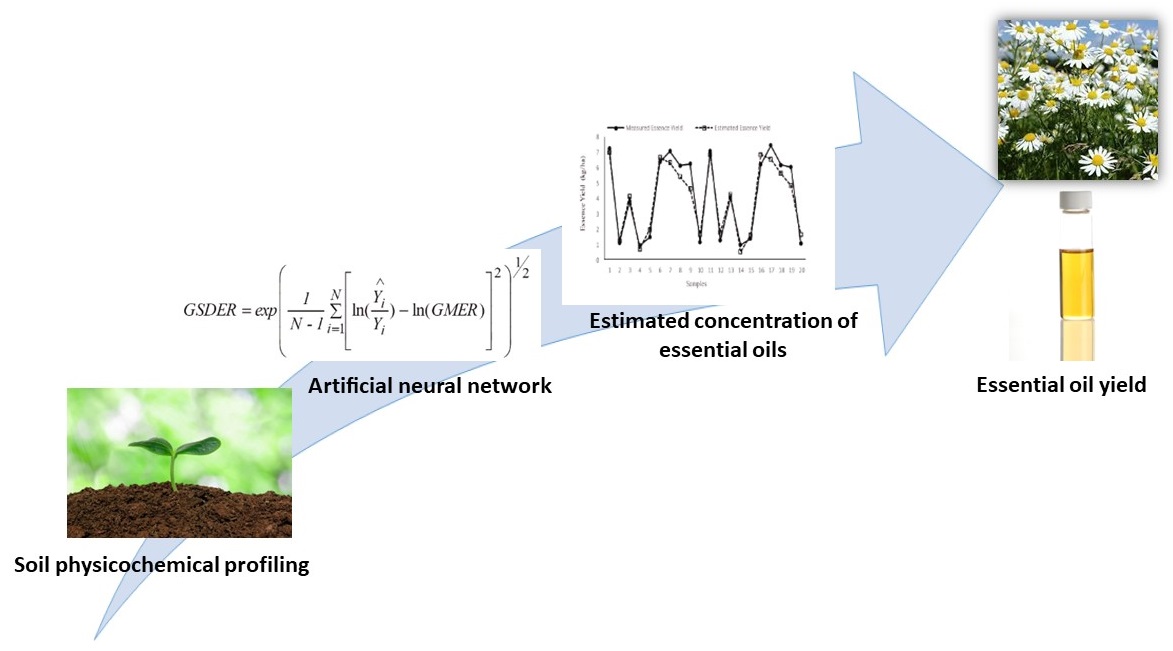Prediction of chamomile essential oil yield (Matricaria chamomilla L.) by physicochemical characteristics of soil

Published 2023-03-01
Keywords
- Artificial Neural Network (ANN),
- calcium carbonate equivalent (CCE),
- multilayer perceptron,
- nitrogen
How to Cite
Copyright (c) 2023 Nazanin Khakipour, Ali Mohammadi Torkashvand, Abbas Ahmadi, Weria Weisany

This work is licensed under a Creative Commons Attribution 4.0 International License.
Abstract
The purpose of this study was to predict the percentage and yield of chamomile essential oils using the artificial neural network system based on some soil physicochemical properties. Several habitats of chamomile cultivation were investigated and 100 soil samples were shipped to the greenhouse. The maximum and minimum of pH, EC, K, OM (organic matter), CCE (calcium carbonate equivalent), and clay in soils were 8.75-7.94, 1.6-1.0, 381-135, 2.30-0.22, 69-16, and 55.6-32.0, respectively. Growth indices, essential oil percentage, and yield were measured. Artificial neural network modeling was carried out to predict the essential oil concentration and yield using three groups of soil properties as a predictor: 1- nitrogen (N), phosphorus (P), potassium (K), and clay; 2- pH, EC, organic matter (OM) and clay; 3- CCE, clay, silt, sand, N, P, K, OM, pH, and EC. So, three pedotransfer functions (PTFs) were developed using the multi-layer perceptron (MPL) with Levenberg-Marquardt training algorithm for estimating chamomile essential oil content. Results evaluation of the accuracy and reliability of showed that, the third PTF (PTF3) which developed by all independent variables had the highest accuracy and reliability. Results also showed that, it is possible to predict the concentration and yield of chamomile essential oil based on soil physicochemical properties. This issue is important in terms of land suitability, identify areas susceptible to chamomile cultivation and planning for essential oil yields.




